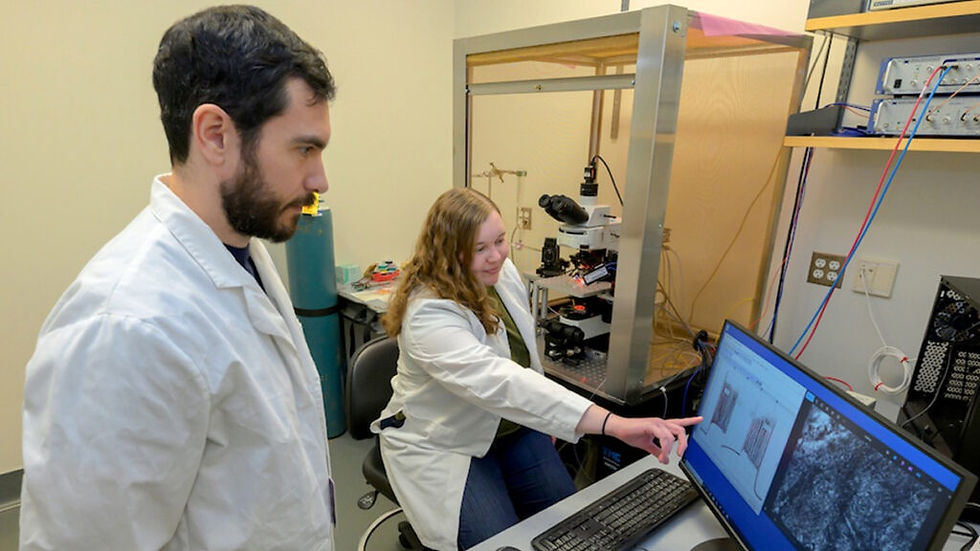Lithium could reverse Alzheimer's symptoms – study in mice and humans
- Helena Pinheiro
- Aug 18, 2025
- 1 min read

Researchers in the US found that lithium, a metal naturally present in the brain, could protect and reverse symptoms of Alzheimer's disease, in a study using human samples and mice.
Scientists at Harvard Medical School, MA, found that brains from people with mild cognitive impairment and Alzheimer’s disease had lower levels of available lithium compared with brains from people with no cognitive impairment - lithium is sequestered in amyloid plaques, which are detrimental accumulations of proteins that are a hallmark of Alzheimer’s disease.
In ageing mice and in mice that develop Alzheimer’s symptoms, the researchers found that low levels of lithium in their diet led to cognitive impairment, inflammation and loss of connection between neurons in the brain. They found that administering a lithium supplement protected the animals against several Alzheimer’s symptoms, such as amyloid plaque accumulation, brain inflammation and loss of brain cells components, restoring the brain to a healthier state.
Current Alzheimer’s disease therapies focus on clearing amyloid plaques from the brain, but these treatments have mild benefits and can have negative effects. If replicated in further studies and clinical trials, this study points to lithium as a potential treatment that could improve all major pathologies associated with the disease.
“My hope is that lithium will do something more fundamental than anti-amyloid or anti-tau therapies, not just lessening but reversing cognitive decline and improving patients’ lives,” said Bruce Yankner, leader of the study published in Nature.



